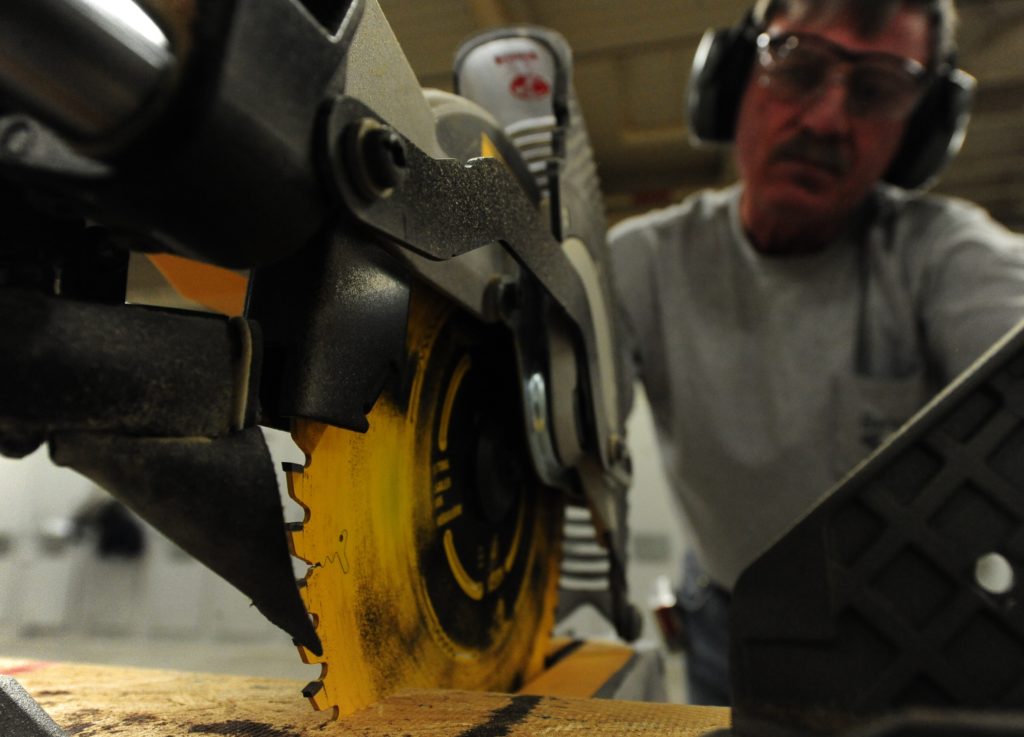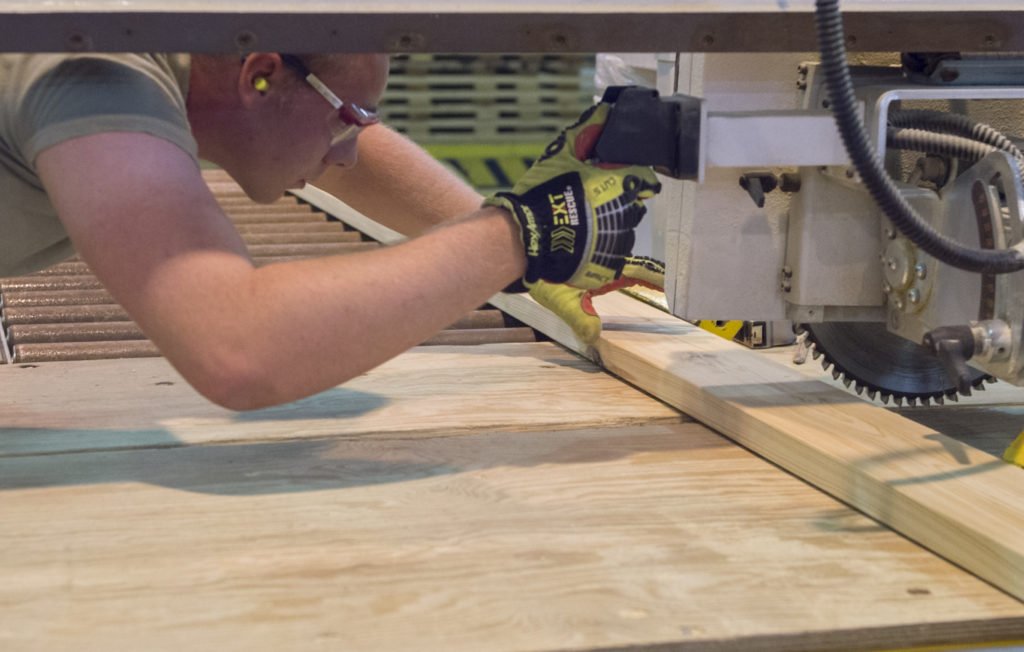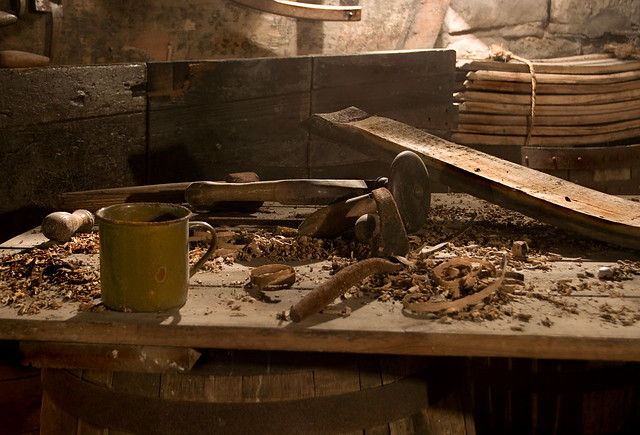In this article, we intend to focus on 10 woodworking safety tips that any woodworker need to know! Working with wood can be a hobby or a safe and enjoyable job; of course, if we take basic and simple safety rules for woodworking and carpentry seriously.
All of these tips are completely rational and verifiable, but failure to follow them when working with woodworking tools can increase the possibility of serious harm to you.
The carpentry workshop or any other workshop has no place to hurry up to do the job or say the word “It will not happen to me!”. Adding these ten tips or rule to your treasures of expertise in woodworking will make your hobby and job safer and more enjoyable.
10 Woodworking Safety Tips
1- Always Use Carpentry Safety Covers
The first and most important safety point in carpentry and woodworking is the use of safety equipment. Using the ear protector is very important when working with noisy tools such as power saws.
The range of over 75 dB for the human ear is unpleasant. Many power tools are limited to 85 to 140 dB. In addition to the permissible range of hearing, the duration of exposure to this space should also be considered. For example, the time allowed for a range of 112 dB is recommended for less than one minute.
Also, the use of safety gloves, suitable work clothes, and work shoes is another requirement of safety at the workshop. Safety glasses are highly recommended. Immediately after entering the workshop, take safety glasses.
2- Wear Suitable Work Clothes
The most suitable clothes for the woodworking business are the ones in which, in addition to the freedom of movement, not loose and hanging with long sleeves. Loose clothing can increase the chance of getting it in the blade of tools or conveyor. Before you start, take off the watch, necklace, ring and all jewelry.
Lichtenberg Wood Burning eBook

Download Lichtenberg Wood Burning eBook
One of the modern techniques for creating wooden artwork is called Lichtenberg wood Burning. In this eBook, we are going to introduce this newfound art to you.
This technique is known with some different names such as Lichtenberg wood burning, fractal wood burning, and electricity wood art.
This technique should not be confused with wood burning art or pyrography. The art of pyrography on wood is the art of creating motifs and designs by burning with hot metal tools on objects such as wooden surfaces.
Lichtenberg burning is a wood-burning technique for creating designs with electricity.
This eBook is a comprehensive guide on Lichtenberg Wood Burning. All you need to know for Lichtenberg Wood Burning is here.
This is a limited-time offer, order now to get access to the future eBook releases.
A suitable work clothing, in addition to your comfort in the workshop environment, makes the body non-vulnerable when it encounters wood chips or acid and colored materials.
3- Avoid Using Drugs, Alcohol and Sleeping Drugs Before Work
Tools in woodworking workshops are very dangerous because of their inherent nature, and there is a need for complete senses to be safe to use. Do not go into the woodworking workshop if you use sleep drugs or any type of physical or mental exhaustion.
4- Disconnect The Power Before Replacing The Blade

Woodworking tools sometimes need replacing of blades or bits.
Be sure to disconnect the device from the power source before removing any blade or the bits, or if the device is rechargeable, remove the battery from the device.
This is a simple tip but very effective safety feature.
Many carpenters have lost their fingers by paying no attention to this very simple point.
5- Use One Portable Cords
There are many woodworking safety tips. It is recommended that you use one durable portable cords instead of using multiple wires in the workshop.
The interconnection of electrical cables in portable cords is a problem when it comes to working.
6- Use Sharp Bits And Blades
It seems to be simple and trivial, but we should know that a tool with a non-sharp edge is a dangerous device!
If the blade of our tool don’t be sharp as it should be, the carpenter and the machine must work more and more to achieve the desired result.
In such cases, it’s more likely that our tool will kick-back or get stuck in the stick.
In addition, a sharp and clean blade will result in a much more precise finished work, so try to keep the blades always sharp and clean.
7- Always Check Nails, Screws, and Metals in The Wood
Always check nails, screws, punches, pieces of stone or any other metal in the wood before cutting.
Especially in used wood, be sure to check the nails and all kinds of metal.
The big problem in such cases can be blade breakdown and device failure, which can cause deviation of the blade towards the operator’s hand.
8- Cut The Wood In The Right Direction

Woodcutting machines are in two ways.
The device moves on the wood or the wood moves on the device.
In both types, you should keep in mind that the direction of cutting movement is in contrast to the blade rotation.
9- Never Touch The Running Blade
It has been widely seen that in tools such as power saws, the operator of the machine tries to clean the soil or the small pieces of wood remaining from the cut with the hand while the blade is still running.
This is one of the most dangerous things possible because the blade is circulating and can cause serious damage even if it is turned off and the blade is rotated less than its full range.
Wait until the blade is completely stopped and then with a small stick remove small pieces of wood.
Keep in mind that the switches can be damaged or re-activated by the strike or inadvertently; Therefore, even if the blade is stopped, observe the precautions.
10- Avoid Distractions
Distraction is always a part of our life, and working in a carpentry workshop is the same.
Never distract yourself from what you’re doing.
Take care when cutting, and finish it safely.
Stay away from anything that blocks your concentration.







Comments
Pingback: Set Up a Woodworking Workshop at Home - Step by Step Tutorial | Wood Dad
Pingback: Fractal Wood Burning Art, Wood Burning With Electricity | Wood Dad